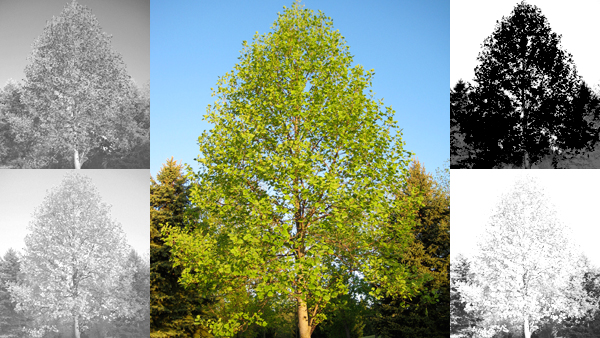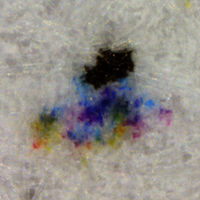How Does an Ink-Jet Printer Produce Colors?
In the simplest sense, an ink jet printer produces colors by placing small dots of ink on paper. Traditional printers use four colors of ink, cyan, magenta, yellow, and black. Newer printers often have additional inks, such as light cyan, light magenta, or gray, to help improve image quality by reducing the visibility of the dots. A dot of each ink type can be placed at each location on the paper. The printed color depends on the size of the dots, or the amount of each type of ink, placed at each location. For example, to produce white, no dots are made at all, allowing the white paper to show through. To make black, large dots of all four types of ink are often printed. To make a saturated red, large dots of magenta and yellow ink are printed. The magenta absorbs green light while the yellow absorbs blue light, leaving only red to be reflected. In similar ways, the amounts of each of the four inks required to make just about any desired color can be determined.
Ink-jet printers are often considered subtractive color mixing devices. Subtractive color mixing occurs when various amounts of different dyes or pigments are mixed and each absorbs (or subtracts) its characteristic colors and amounts of light. On the other hand, additive mixing is what happens on our computer monitors and televisions when tiny spots of light are overlapped (or added together) to make mixtures of light. As it turns out, most printers actually function using a combination of additive and subtractive color mixing. Subtractive mixing occurs where the ink colors overlap and absorb different colors of light (see the purple, green and red areas in the image at left ... those were all created with overlapping amounts of cyan, magenta, and yellow ink). Then additive mixing occurs when our eyes blur all of those very tiny dots together and effectively add the light reflected from each of the different areas (imagine blurring the micrograph at the left, or viewing it from a very large distance). Since those dots are often on the order of thousandths of an inch in diameter.
So why is black ink used in printers? A very wide range of colors can be made with cyan, magenta, and yellow primaries. And, after all, there are only three degrees of color freedom in the visual system, so we shouldn't need to use more than three inks. In fact, some very successful printing technologies do only rely on three primaries. Photographic printing, with just cyan, magenta, and yellow dyes on paper, is one such example. Black ink is used in many printing technologies for two main reasons. It allows for much darker colors to be printed. It is difficult to select cyan, magenta, and yellow primary inks that produce a deep, dark black while also allowing for saturated colors. Also, black ink can be used instead of overlapping large amounts of cyan, magenta, and yellow inks to make neutral colors. Such colors can be made with one-third the amount of ink and at the same time black ink tends to be less expensive than colored ink. An added bonus of this is that it is easier to make prints with consistent color appearance when neutrals are printed with mostly black ink instead of variable combinations of three inks.
![]()
Explore the NEXT TOPIC at this level.
Explore the NEXT LEVEL on this topic.
Ever wonder ... Why do leaves change in the autumn?
Updated: Apr. 19, 2011

